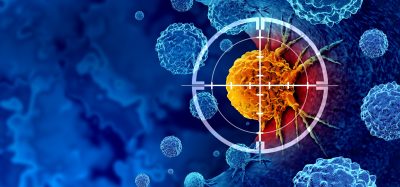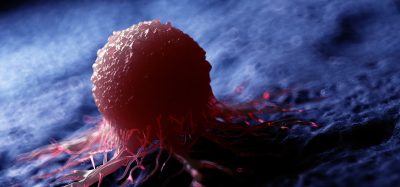Engineered nanostructures enhance immune system’s ability to combat cancer
Posted: 20 July 2023 | Izzy Wood (Drug Target Review) | No comments yet
Important step achieved by US researchers as stable and potent immune therapy delivery system eradicates tumours in mouse models of melanoma, colon, and breast cancer, while preventing the formation of future tumour.


Over the last decade, scientists have been on a relentless quest to find more potent and durable cancer treatments. Amidst the myriad of immunotherapies, one approach stands out as particularly promising: Stimulator of Interferon Genes activation (STING agonism), which harnesses the patient’s immune system to combat tumours throughout the body.
Though revolutionary in concept, there have been significant obstacles to overcome before STING agonism can be adopted as a viable treatment option for cancer patients. A major challenge has been the ineffective intravenous administration of STING agonist drugs, due to poor drug stability and limited uptake by immune cells.
Tackling these obstacles head-on, researchers at Brigham and Women’s Hospital, US, a founding member of the Mass General Brigham healthcare system, have engineered stimuli-responsive nanoparticle structures that address these limitations. The new design allows STING agonist drugs to be released precisely when reaching the target cells.
In a groundbreaking study published in Nature Nanotechnology, the scientists demonstrate that these stabilised nano-formulations not only eliminated active tumours in mice but also trained their im mune systems to recognise and eliminate future tumours.
Lead author Dr Pere Dosta Pons, an instructor in the Brigham’s Department of Medicine, explained the novelty of their approach: “We not only are training the immune system to target and eliminate cancer cells, but also to generate immune memory for preventing cancer recurrence.”
STING agonism involves activating a protein called the stimulator of interferon genes, which signals the immune system about the presence of invaders. When the body encounters viruses or bacterial species, messenger molecules known as cytosolic cyclic dinucleotides (CDN) attach themselves to STING. This activation triggers the production of proinflammatory cytokines, which activate immune cells such as natural killer cells, macrophages, and T-cells, enlisting them to clear the infection.
However, cancer employs a clever disguise, appearing like the body’s own cells to evade detection through the STING pathway. To counter this, researchers have been striving to teach the immune system to recognise and attack cancer cells by delivering STING agonists to immune cells in tumour microenvironments.
The Brigham team’s breakthrough lies in their new nanoparticle structure that more efficiently transports CDN molecules into immune cells. By directly connecting laboratory-produced CDNs to nanoparticles made of poly-(beta amino esters) or pBAEs, they have enhanced the compound’s stability and potency when injected into the body, thereby expanding its therapeutic window. The nanostructure acts as a taxi, transporting CDN messengers directly to tumours and releasing the cargo only upon reaching the target cells.
To assess the effectiveness of their approach, the team administered the CDN-nanoparticle (CDN-NP) compounds to mice with melanoma, colon cancer, and breast cancer tumours. The results were astonishing as their CDN-nanostructures were taken up by target immune cells in the tumour microenvironment and secondary lymphoid organs, providing mice with long-term immunity against future tumours.
Remarkably, when these surviving mice were reintroduced with tumours 60 days after their initial treatment, they were able to reject the tumours on their own.
Senior author Dr Natalie Artzi, a principal investigator in the Brigham’s Department of Medicine, expressed the significance of their work: “Our research addresses the fundamental interplay between the immune system and cancer through the use of novel structures that have been designed to be both stable and potent.”
With this exciting breakthrough, researchers bring us one step closer to more effective and lasting cancer treatments, offering hope to countless patients and their families battling this devastating disease. As further developments emerge from this groundbreaking research, the medical world eagerly anticipates a new era of cancer treatment on the horizon.
Related topics
Animal Models, Immuno-oncology, Immuno-oncology therapeutics, Nanotechnology
Related conditions
Breast cancer, Colon cancer, Melanoma
Related organisations
Brigham and Women's Hospital
Related people
Dr Natalie Artzi, Dr Pere Dosta Pons








